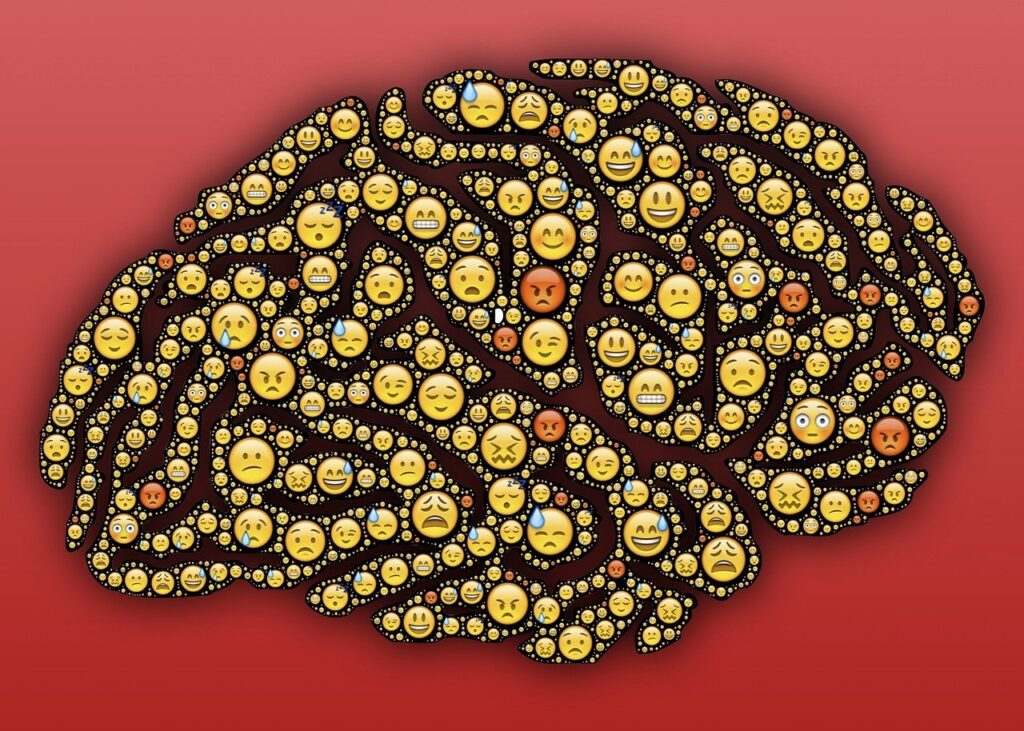
In the tapestry of our inner world, the threads of emotions, feelings and moods weave a complex and intricate pattern. Often used interchangeably, these terms carry subtle distinctions that, when understood, can enable us to navigate our psychic world more effectively. So, let’s unravel this tangle to gain a better understanding of our inner experiences.
1. Emotions: Chemical Messengers of Experience
Emotions are dynamic, subjective internal experiences encompassing both a ‘mental state’ and a ‘physiological state.’ The mental state involves cognitive labels like love, anxiety, or anger, while the physiological state manifests as physical sensations or feelings in the body. Emotions last for a brief period (about 90 seconds) and are intricate responses generated in the brain when stimulated by thoughts, sounds, sights, smells, or tastes. They drive our behavior consciously and unconsciously, involving hormone release and physical changes, such as increased heart rate and blood pressure.
Example: Imagine standing on the edge of a tall building. Your thoughts (mental state) focus on the height and potential danger (cognitive labeling), triggering physical sensations (physiological state) like an increased heart rate and sweaty palms.
2. Feelings: The Conscious Experience of Emotions
Feelings emerge as conscious experiences resulting from emotional reactions. Feelings range from subtle to intense, providing awareness of our emotional state as it manifests within the body. Unlike emotions that last for a brief period, feelings persist longer, shaped by memories, experiences, environment, and relationships.
Example: Imagine walking into a room filled with the comforting aroma of freshly baked cookies. The delightful scent triggers a feeling of warmth and nostalgia, as memories of childhood and happy moments flood your consciousness. In this case, the emotion of joy transforms into a feeling, offering a conscious and enduring experience shaped by the sensory input, memories, and the pleasant environment.
3. Moods: A Holistic View of Emotional States
Moods transcend specific moments, lingering for days or weeks, reflecting overall feelings of contentment, anxiety, or depression. Unlike emotions and feelings tied to specific stimuli, moods endure and can be influenced by factors such as stress, nutrition, sleep, genetics, and unaddressed emotions. They represent a combination of emotions and feelings, offering a more general and semi-persistent emotional state.
Example: Consider a week where work stress, lack of sleep, and unresolved issues contribute to an overarching mood of irritability or low energy.
The Purpose of Emotions, Feelings, and Moods:
These internal processes are not mere psychological jargon; they are essential tools for survival and adaptation. Emotions, feelings, and moods allow us to interpret and respond to the world around us. While emotions serve as immediate responses to stimuli, feelings and moods provide a more prolonged emotional backdrop, preparing us to tackle challenges or seize opportunities.
Navigating the Internal Landscape
In the intricate dance of emotions, feelings, and moods, understanding their distinctions offers a roadmap to emotional well-being. Recognizing and appreciating these internal processes allows us to manage our mental states effectively. Emotions, feelings, and moods aren’t adversaries; they are essential tools for interpreting the world, navigating challenges, and embracing opportunities.
References:
Connor-Savarda, B.-N. (2023, March 1). What’s the Difference Between Emotions, Feelings, and Mood? Emotional Intelligence Magazine +. Retrieved from https://www.ei-magazine.com/post/understanding-moods-feelings-and-emotions#:~:text=Whereas%20emotions%20and%20feelings%20involve,%2C%20anxiety%2C%20or%20depression
Gagnon, D. (n.d.). Why Do We Have Emotions? Retrieved from: https://www.montrealcbtpsychologist.com/storage/app/media/why-do-we-have-emotions.pdf
McInnes, J. (n.d.). Emotions, Feelings, and Moods: What’s the difference? Innowell. Retrieved from: https://www.innowell.org/library/articles/emotions-feelings-and-moods/
